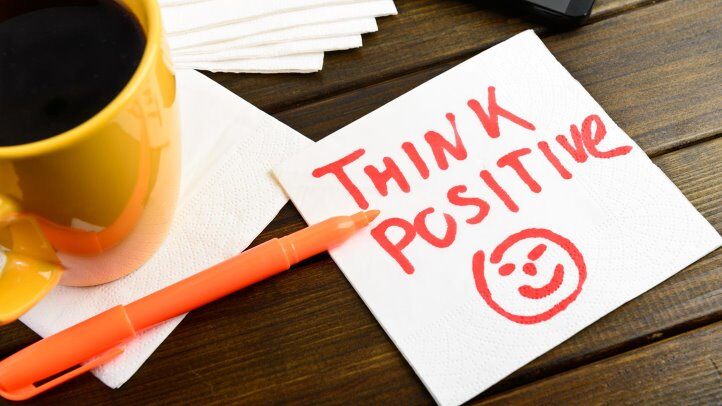Martin Seligman, a leader of positive psychology, wanted to find out what the key skill was that would determine successful insurance salespeople. This was a profession in which candidates had to expose themselves to a lot of rejection.
Can you guess the outcome of his research?
He discovered that what determined success was not education, gender or socioeconomic criteria.
Instead, it was optimism.
Seligman concluded that a key skill of top performers was their ability to train themselves to recognize negative thoughts and instead focus on more positive outcomes.
One reason why optimists are so much more successful than others is that they are willing to face challenges and difficulties, rather than avoid them.
While a pessimist prefers to shrink his world and avoid the possibility of potential defeat, an optimist is willing to take a chance.
According to Seligman, optimists respond to success and defeats distinctively different from pessimists, in at least three ways:
#1 How permanent/ temporary an event feels:
Optimistic people believe bad events to be temporary and bounce back quickly from failure, whereas Pessimists may take longer periods to recover if at all.
At the same time, optimists consider successes permanent whereas pessimists see them as temporary.
Example: An optimistic athlete recovers quickly from a defeat because he believes that through hard work and training he will achieve better results in the future. A pessimist, on the other hand, will be very hard on himself and need much longer time to recover from big disappointments.
#2 The extent to which an event is pervasive and affects other areas of life:
Pessimistic people assume that failure in one area of life means failure in life as a whole whereas successes don’t really affect them that much.
Optimistic people, on the other hand, allow good events to brighten every area of their lives rather than just the particular area in which the event occurred. Optimists also consider setbacks as specific and unrelated to other areas.
Example: A businessman enters a poor transaction. For the optimist, this experience will now affect his relationship with his family and other key areas of his life. A pessimist, on the other hand, may start seeing him as an outright failure.
#3 How personal they take events:
Pessimists attribute negative events to their own flaws while optimists attribute failures to outside circumstances or other people.
In contrast, optimists attribute successes to themselves while pessimists attribute them to others.
Example: An optimist does not take rejection in business personally. A pessimist, on the other hand, will blame himself when people around him get upset or angry.
In short, the way you speak to yourself can determine how energized and successful you will be. You may not be able to control all the results you aspire, but you can definitely control how you speak to yourself, and how you respond to certain events. By doing so, you self condition yourself to become a more positive and optimistic person.
How to cultivate optimism
Many of us are conditioned with pessimistic thoughts, always anticipating the worst possible outcomes and dwelling on past mess ups.
It’s a survival mechanism that served our ancestors who were under constant risk.
So we magnify dangers and minimize successes.
Luckily, for most of us reading this post, survival is no longer the issue.
And in order to thrive on a day to day basis, it will help us build confidence when things go well, and learn from setbacks in a manner that allows us to recover swiftly.
This is how we train ourselves to perform at our best.
But how can we become more optimistic?
Seligman created the ABC Method, which is pretty simple, and yet helps us change the way we think.
This is how it works:

Every letter stands for a step:
A – Adversity or Activating Event:
We have to become aware of our thoughts that are triggered by an event that causes lots of negative emotions.
Example: failing an exam and feeling miserable.
B – Beliefs:
We need to notice how we interpret the event, and what beliefs it triggers.
Example: I am stupid, this is too hard for me
C – Consequences:
Next, we need to think about some of the consequences our beliefs can cause, for the future.
Example: I won’t study anymore, it’s pointless. Why would I embarrass myself again in this way?
D – Disputation:
This is a key step:
Once we defined the consequences of our belief, we must use evidence to challenge them.
Our goal is to highlight our mental distortions that often lead to the kind of black and white thinking that will make us feel like complete failures, even when such labels are far from the truth…
For example:
- Is there an alternative explanation? I didn’t study enough
- What evidence can I recall to prove the alternative explanation? I passed other exams
- Highlight the inaccuracy of the belief: Am I magnifying the negativity of this event, minimizing past successes and making up stories? Just because I failed an exam does not mean I can forget all my past successes.
- Is this belief usefulness to me? Sure, at first it might be an effective coping mechanism to keep me away from the pain of possibly failing future exams again. At the same time, it will also certainly make me feel demotivated and depleted, harming future ambitions and any chances to ever pass an exam again. So we want to ask ourselves: Is there any less destructive way to look at this? For example, maybe I can learn from my mistakes– and failing this exam will actually help me in the long run. 😉
E – Energization:
Once we are able to condition ourselves into positive thoughts and behaviours in response to A, B-D, we feel more energized. We become a benefit finder.
Example: Feeling the courage to keep trying…
The ABC-Method is a powerful tool because it helps us create the kind of agile thinking that will help us overtime transform outdated limiting beliefs into more empowering ones.
However, to see results, it takes a bit of time and practice.
So here is what I suggest.
For a week, please choose at least one emotionally charged experience every single day, and go through the ABC process in a journal so that you can gradually become aware of your limiting beliefs and then turn them into more empowering ones.

Do you want to become a real force in your industry and take your career and your life to the next level without ruining your health and your closest personal relationships?
Get your free PDF copy of the 26,000 word long Ultimate Guide to High Performance and learn what world class athletes and top performers do to increase their focus, energy levels and mental toughness in order to outperform their competition.
In this Guide, you will learn how you can:
- Become so productive that you will move towards your big goals faster than ever before, even if you feel extremely busy and overwhelmed right now.
- Excel in those big pressure moments that define top performers but make everyone else sweat bullets.
- Develop the mental toughness to bounce back from setbacks and disappointments Swiftly.
